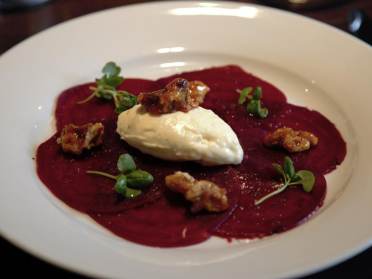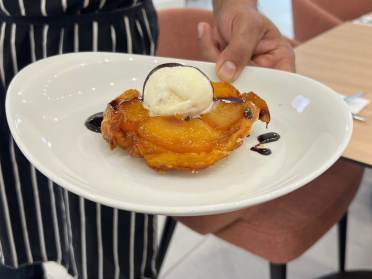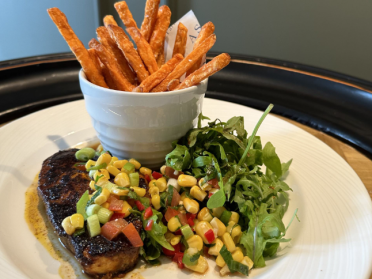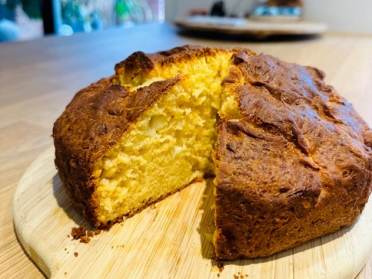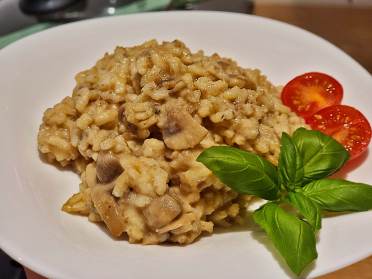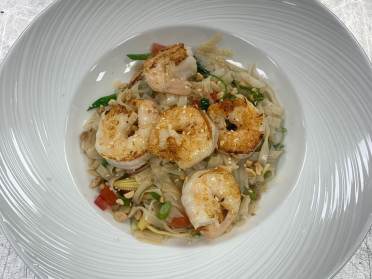
Wanted: One home chef with a passion for cooking
Requirements: Review and recreate one Michelin style recipe
Reward: £250
Competition is now closed.
With the whole world learning new recipes and becoming chefs from home for the first time, top chefs at Audley Villages have adapted recipes from Michelin starred restaurants that anyone can recreate from home.
From braised belly pork to seared scallops, the chefs are challenging you to recreate and review one of these recipes for a payment of £250.
All you have to do is make one of the following recipes and share a great photo of the finished dish on social media by using the hashtag #MichelinFromHome, and tagging @AudleyVillages on Instagram, Facebook or Twitter.
The best will win £250.
Michelin Style Recipes From Audley Villages
See the full recipes below.

How to apply
Competition is now closed.
There are just two easy steps to being in the running to win:
1. Recreate one of the Michelin Style Recipes From Audley Villages at home and snap your best photo
2. Share it with Audley Villages on social media by following and tagging @AudleyVillages on Instagram, Facebook or Twitter and by using the hashtag #MichelinFromHome
The successful applicant will be selected based on the photograph of your Michelin style dish at the end of the application period.
Competition is now closed.

What happens if you win
We’ll be in contact with you on social media to tell you you’ve won!
Between us, we’ll work out how to receive your review, and send over your payment along with a free Audley Villages Cookbook.
So what are you waiting for?
Your #MichelinFromHome creation is just one photo away.
Terms and conditions:
- Each participant can only submit 1 Michelin recipe recreation.
- If you do not have access to all the ingredients in your chosen recipe, please make appropriate ingredient substitutions. This will not impact the overall selection of the winner.
- You will be paid £250 and receive a free Audley Villages cookbook.
- This is not an offer of full-time employment.
- If you do not respond upon winning, the prize will be forfeited and given to another entrant.
- Applications open to UK residents aged 18 and over.
- You may apply for this job by posting a picture on Facebook, Twitter, or Instagram of your Michelin recipe recreations (it must be from the list of Michelin recipes in this post), tagging Audley Villages (@AudleyVillages) and using the hashtag #MichelinFromHome
- By submitting pictures for this job application, you are granting Audley Villages permission to use them on Audley Villages' own social media platforms and website.
- All applications must be submitted by 26 June 2020. Any entries made after this date will not be counted.
- The successful job applicant will be announced on 1 July 2020. There will be one winner.
Easy Banana Bread
By Head Chef Alex at Langton's at Cooper's Hill, Surrey
Serves 12
Ingredients:
- 200g soft butter
- 200g caster sugar
- 400g self-raising flour
- 4 eggs
- 1 tsp baking powder
- 1 tsp bicarbonate of soda
- 5 bananas, ripe (approx. 400g peeled), mashed
Toffee sauce
- 250g caster sugar
- 4 tbsp water
- 50g butter
- 140ml double cream
Method:
- Preheat the oven to 180°C/160°C fan/Gas 4.
- Line a 1kg loaf tin with baking paper.
- In the bowl of an electric mixer with a paddle attachment, put the butter, sugar, eggs and flour. Alternatively use a large bowl and a handheld electric mixer. Beat on medium speed for a few minutes, until everything is well combined 4. Stir in the baking powder and bicarbonate of soda and mashed bananas.
- Turn into the prepared tin and smooth the surface with the back of a spoon. Loosely cover the tin with baking paper or foil and bake in the middle of the oven for 45 minutes–1 hour, removing the paper or foil for the last 20 minutes.
- Meanwhile make the toffee topping.
- Melt the caster sugar and water in a pan and then bubble over a medium heat until golden. Reduce the heat and then beat in the double cream (take care as the mixture will splutter). Mix until smooth and then transfer to a bowl to cool.
- When the cake is ready, leave to settle in the tin for 10 minutes before turning out onto a wire rack. When it is still just warm, transfer to a plate.
- Spread with the toffee topping and decorate with dried banana chips, or whatever tickles your fancy.
Method (for the sauce):
- Heat the sugar and water in a pan until the sugar is dissolved. Increase the heat and leave to bubble for 4-5 minutes until it becomes caramel.
- Remove from the heat and either stir or whisk in the butter or double cream. If using a whisk, be careful as it will splash.
- Once smooth, leave to cool and thicken. Once cool, drizzle or lather your banana bread with the sauce and enjoy!
Vegan Wild Mushroom Risotto
By Head Chef Nigel at Symonds at Redwood, Bristol

Ingredients:
- 350g Arborio rice
- 1 clove garlic - chopped (dried garlic will suffice)
- 175ml White wine
- 50g Prosociano (vegan parmesan cheese)
- 600ml Vegetable stock
- 50g Vegan Butter or Olive oil
- 150g Wild mushrooms - Oyster, Shiitake, Pied bleu etc (If not available, chestnut mushrooms will suffice)
- 2 Banana shallots
- 5g Baby pea shoots (If not available, then chopped pea shoots will be fine)
- Salt & Pepper
Method:
- Melt the butter or heat the oil in a pan, add shallots & garlic, fry until soft but not coloured.
- Add rice and cook for 2 minutes or until rice is translucent.
- Add the white wine, stir until the wine is almost absorbed. Add a ladle of stock, allowing the rice to absorb it. Continue adding more ladles of stock while stirring constantly. Make sure you allow the rice to absorb almost all of the stock before adding another ladle.
- Once all stock has been absorbed, add the wild mushrooms and stir. Once the rice is cooked add an extra knob of butter (for taste), the Prosociano and seasoning to taste.
- Garnish with baby pea shoots. Note: Deep fried basil and parmesan crisp are optional additions.
Skrei Cod with Potato Fondant, Brown Shrimp And Almond Butter
By Head Chef Mark at Blandy's Bar and Bistro at Inglewood, Berkshire
Serves 1
Ingredients:
- 160g-180g Skrei cod portion (if cod is unavailable, or you fancy a different fish, then chef recommends using hake)
- 50g cockle meat
- 50g brown shrimp (or prawns)
- 50g almonds
- 1 Romanesco (or cauliflower if unavailable)
- 1 large potato
- 150g unsalted butter
- Tarragon (optional)
- Chives
- Pea shoots (garnish)
- Olive oil
- Squeeze of lemon juice
- Seasoning (salt and pepper)
Method:
- Peel the potato and using a medium sized cutter/metal ring press through the potato to create a cylinder shape. Using a knife slice either end of the cylinder whilst still in the cutter to create a straight top and bottom to the potato fondant.
- Bring a small pan of water to the boil, deep enough to cover the fondant and to the water add 50g of butter, salt and the potato. Simmer gently until the potato is soft all the way through. Then remove from the water and leave to cool.
- Place the almonds on a metal baking tray, sprinkle with a pinch of salt, and cook in the oven at 160 degrees until golden brown. This should take 6 minutes approximately, then remove and leave to cool.
- Prep the Romanesco (or cauliflower) - Remove the leaves and stem, then using a small knife cut away 4 florets of Romanesco. Make sure all florets are a similar size to ensure that cooking is even throughout all 4. Bring to a separate pan of water to the boil and cook the Romanesco for 3 minutes to soften the core.
- Soften the rest of the butter in a different pan until completely melted and it starts to bubble. Then, one at a time add the brown shrimp, cockles and almonds and gently simmer to cook through.
- Using a sharp knife, chop the tarragon and chives finely, then set aside. These will be added to the sauce just before serving.
- Heat a non-stick pan on a medium to high heat with a splash of olive oil. Season the skin side of your cod (or hake) with salt and place skin side down gently into the pan. Cook for 1-2 minutes until the skin is starting to crisp and turn to a golden brown colour on the edges, then remove from the heat.
- Using the fish pan, colour each flat side of the potato fondant to a golden colour and then place both the cod and the potato in the oven at 180 degrees for 6-7 minutes.
- Bring the butter sauce back to a simmer, add the Romanesco and the herbs you chopped earlier and season with salt and pepper to taste.
- Place the potato fondant in the middle of your chosen bowl or plate, using a spoon place the Romanesco evenly around the potato creating a gap between each one.
- Now spoon evenly some butter, shrimp, almond and cockles into each, creating a moat surrounding the fondant.
- Place the fish on top of the fondant with the skin side facing upwards and garnish with the peas shoots to finish.
Kentish Spring Rump of Lamb, Potato Dauphinoise, Pea Puree, Asparagus Tips and Rosemary Red Wine Reduction
By Chef Rachid at The Romney at Mote House, Kent

Serves 1
Ingredients:
- 180-200g of lamb rump scored and marinated in thyme and cumin (you could score the lamb and season with salt and pepper if thyme and cumin are not available)
The Potato Dauphinoise:
- 2 large potatoes
- 300ml double cream
- 1 garlic clove crushed (dried garlic will suffice if fresh is not available)
- 50g of butter
- Few leaves of thyme
- Salt and pepper
The Pea Puree:
- 100g blanched petit pois (tinned or frozen peas could be used as a more accessible alternative)
- 25g of butter
- Few leaves of mint (optional)
- Salt and pepper
The Garnish:
- 4 asparagus tips, cleaned and blanched
- Few cooked petit pois
- Few cooked and peeled broad beans (you could substitute for diced green beans)
The Sauce:
- 300ml red wine
- 2 rosemary stalks
- 100ml lamb stock
- 20g butter to finish
Method:
- In a hot pan sear, the marinated lamb for 3 minutes on each side and place in oven at 180c for 12 minutes, remove from the oven and leave to rest for at least 5 minutes.
- Bring to the boil the cream, the crushed garlic and thyme.
- Peel the potatoes and slice to 3mm thick.
- Season the sliced potatoes, then butter a small oven dish generously and lay the potatoes overlapping.
- Pour the cream sauce over the potato, cover with foil and place in the oven at 180c for 30 minutes. Then remove the foil and leave to cook for a further 7 minutes or until golden brown, cool and cut with round cutter.
- Blanch the peas in boiling water with mint leaves for 3 minutes, then drain and blend with salt and pepper, mint leaves and butter, using a blender or hand blender. You could mash by hand them but wouldn't get the smooth result.
- Cut the asparagus stalks in half and peel the bottom side. Blanch in salted boiling water for 5 minutes, then cool in ice water.
- Bring to the boil the red wine and reduce it by half.
- Add the rosemary and lamb jus and reduce by half.
- Remove the rosemary stalks and whip in the butter, then season with salt.
Plating:
- Heat up all ingredients (if not kept warm). On a large plate place two quenelles of pea puree on each side topped with one asparagus.
- Place the round potato dauphinoise in the middle of the two pea quenelles.
- Slice the lamb into three slices, drain any blood, and place on the top of the potato. Then top it with the two remaining asparagus tips.
- Drizzle some of the sauce around the plate and serve the rest on the side.
Tips:
- Always rest your meat - the longer it rests the softer the meat becomes.
- After you blanch the green vegetables, once cooked, put them straight away in ice bath. This keeps the vegetables greener.
- Before you portion the potato dauphinoise, always press it with a heavy object so that it resembles a cake.
Seared Scallops, Miso Glaze, Sesame Puree, Turnip, And Verjus Cream (Re-Make)
By Head Chef Alex at Langton's at Cooper's Hill, Surrey
Serves 3-4
Miso Glaze
Ingredients:
- 100g brown miso paste
- 50g dark soy sauce
- 50g honey
- 100ml sesame oil
Method:
- Add all ingredients to a blender and blend until smooth.
- You can store your miso glaze in a covered container in fridge for up to 1 month.
- It can also be used on many vegetables, meats and fish to add a umami punch to any dish.
- You can cheat and buy a miso sauce from the supermarket to save time.
Roasted Turnips
Ingredients:
- Turnips
Method:
- Wrap the turnips in foil with oil and salt and bake in the oven 180c 45 mins.
- Remove the foil and peel off the skins, then cut them into pieces.
- Store in a container for up to 3 days so they can be used in multiple dishes and salads.
White Wine Sauce
Ingredients:
- 100 ml sweet white wine (verjus is better if you have but is expensive so sweet white wine is a good alternative)
- 150ml double cream
- Sprig of thyme 4-5 peppercorns
- Salt (to taste)
Method:
- Add white wine to a pan with peppercorns and thyme, and reduce to a syrup until the color becomes darker.
- Add the cream and bring to the boil.
- Continue to boil until the cream thickens and then strain into a container.
- Again, this can be stored for 2-3 days in the fridge.
- This white wine sauce is a versatile sauce and can be used with different fish and vegetables.
Sesame Puree (Tahini)
Ingredients:
- (To save time you can buy tahini from the shops)
- 10 tbsp of sesame seeds - toasted
- 5 teaspoons of sesame oil
- 1 ¼ teaspoons of salt
- 2 tbsp of tepid water
Method:
- Toast off your sesame seeds in a dry pan until golden.
- Place in a blender and blend until powdery.
- Add in the oil and blend again.
- Slowly add the water until smooth and glossy.
- Store in an airtight container for up to a week.
Sesame Tuille
Ingredients:
- 50g mixed sesame seeds (black and white)
- 50g butter
- 1 tbsp orange juice
- 25ml glucose syrup (available in supermarkets)
- 25g plain flour
- 75g icing sugar
Method:
- Add butter, glucose, and orange into a pan and gently warm until combined.
- Sieve the flour and icing sugar and add it to the orange mix.
- Add sesame seeds and place in a bowl. Allow to rest for 1 hour.
- Preheat an oven to 180c.
- Once cooled, use 2 slip mats (or greaseproof paper if you don’t have these). Place the mix onto one of the sheets, then place the other sheet on top and use a rolling pin to roll flat.
- Once rolled out, place in the oven for 12 minutes.
- Take out and allow to cool slightly before removing the top piece of greaseproof paper.
- Leave to fully cool and then break into desired pieces and put in an airtight container for up to 1 month.
- If you want to save time then you can buy sesame snaps from the supermarket and will work in a similar way.
Cider Braised Belly Pork and Haggis Bon-Bons
By Head Chef Marius at Aldwyn's at Ellerslie, Malvern

Serves 12
Haggis Bon-Bons
Ingredients:
- 454g Simon Howie Original Haggis (available in Tesco and Sainsburys)
- 250g dried breadcrumbs
- 3 tbsp of flour
- 3 eggs, beaten
- Vegetable oil
Method:
- Gently break up the haggis in a food processor by pulsing for a few seconds.
- Shape the haggis into individual balls, approx. 20-25g each.
- Roll the balls in plain flour, dip in beaten egg mix and then coat in breadcrumbs. Repeat this step and cover with egg and breadcrumbs twice to ensure a good covering.
- Ideally cook in a deep fat fryer at 170°C or deep fry in a saucepan for approximately 2 minutes until golden brown.
Cider Braised Belly of pork
Ingredients:
- 1.2kg piece of unscored boneless pork belly
- 500ml good-quality cider
- Small splash cider vinegar, plus extra to season
- 1 large carrot, roughly chopped
- 1 onion, roughly chopped
- 2 celery sticks, roughly chopped
- 2 garlic cloves, smashed (dried garlic will suffice if fresh is not available)
- Sprig fresh thyme
- 2 bay leaves
- 1L fresh chicken stock
- 2 tbsp sunflower oil
- 1 tin of broad beans
- 1 tin of peas (or frozen)
- 1 butternut squash
- 1 knob of butter
Method:
Day 1:
- Heat oven to 180C/160C fan/ gas 4. Place all the ingredients except the pork and sunflower oil in a flameproof pan that will fit the pork snugly – a casserole dish is ideal. Season, bring everything to the boil then turn down the heat and slide the pork into the pan. The pork should be totally submerged – if it isn’t, top up with water. Cover the dish with a lid or tight tent of foil and place it in the oven for 3 hours undisturbed.
- When the pork is cooked, leave it to cool slightly in the stock. Line a flat baking tray with cling film. Carefully lift the pork into the tray and make sure you get rid of any bits of vegetables or herbs as they will end up pressed into the pork. Cover the pork with another sheet of cling film and cover with a flat tray or dish – the tray must be completely flat as any indentations will be pressed into the pork. Weigh the pork down with another dish or some cans and leave to cool in the fridge overnight. Strain the juices into a jug or small saucepan, cover and chill.
Day 2:
- Unwrap the pork and place on a board. Trim the uneven edges so that you have a neat sheet of meat. Cut the meat into 4 equal pieces and set aside until ready to cook. Lift off any bits of fat from the braising juices and tip what will now be jelly into a saucepan, then bubble down by about two-thirds until starting to become slightly syrupy. Add a few more drops of vinegar, to taste.
- Heat the oil in a large frying pan until hot, then turn the heat down. Add the pork to the pan, skin-side down – be careful as it has a tendency to spit. Sizzle the pork as you would bacon for 5 mins until the skin is crisp. Flip it over and cook for 3-4 mins until browned.
- Pop the broad beans into another pan, add peas and a touch of butter, warm them up on slow heat.
- On a separate pan start to sear your butternut squash, belly pork and hand dive scallops. When nice and brown serve as per picture with Bon-Bons and sliced radish.
Honey and Szechuan Pepper Glaze Duck Breast With Sticky Coconut Rice, Broad Beans, and Stem Ginger
By Chef Gurpreet at Three Church Road at St George's Place, Edgbaston
Ingredients:
- 1 duck breast
- 50g basmati rice
- 50g coconut milk
- 10g palm sugar
- One stick lemon grass
- Salt
- Cracked black pepper
- 30g butter
- 50ml honey
- 10ml soy sauce
- 20g Szechuan pepper
- 10g coriander seeds (or dried)
- 10g cumin seeds (or dried)
- Stem ginger to garnish
- Baby chart leaves to garnish
Method:
- Preheat the oven to 200°C.
- On the stove top, add the rice, coconut milk, lemongrass, crushed palm sugar and salt to a small saucepan along with 50ml water, bring to the boil and then simmer gently until fluffy and cooked through.
- Meanwhile, heat a non-stick pan over medium-high heat. Cook the duck for 3–4 minutes, skin side down, or until the skin is golden and starting to crisp.
- Remove the pan from the heat, place the pan in the oven and cook for a further 5–8 minutes. Then remove and set aside to rest until serving. This is for a medium-cooked duck, leave in the oven for a further 5 minutes for well cooked meat.
- Toast the Szechuan pepper, coriander seeds & cumin seeds in a hot dry skillet or frying pan over a medium heat, until fragrant. This should take approx. 1-2 minutes.
- Crush the seeds.
- Place the honey, soy sauce, crushed spices add into small pot add boil together until reduced.
- In a separate pot, blanche the broad beans for 1-2 minutes. Alternatively, flash fry in the pan once you remove the duck and set it aside to rest.
- To serve, make sure all the elements are hot. Glaze the duck with the Szechuan sauce. Add a serving of sticky rice to the plate, top the rice with the medium-cooked duck breast . Add garnish to the side of the plate, then drizzle over the dressing and serve immediately.

Happy cooking
We look forward to seeing your at-home creations and the winner will enjoy a £250 prize and the brand new Audley Cookbook.
If you have any questions, please ask on socials or email us.





